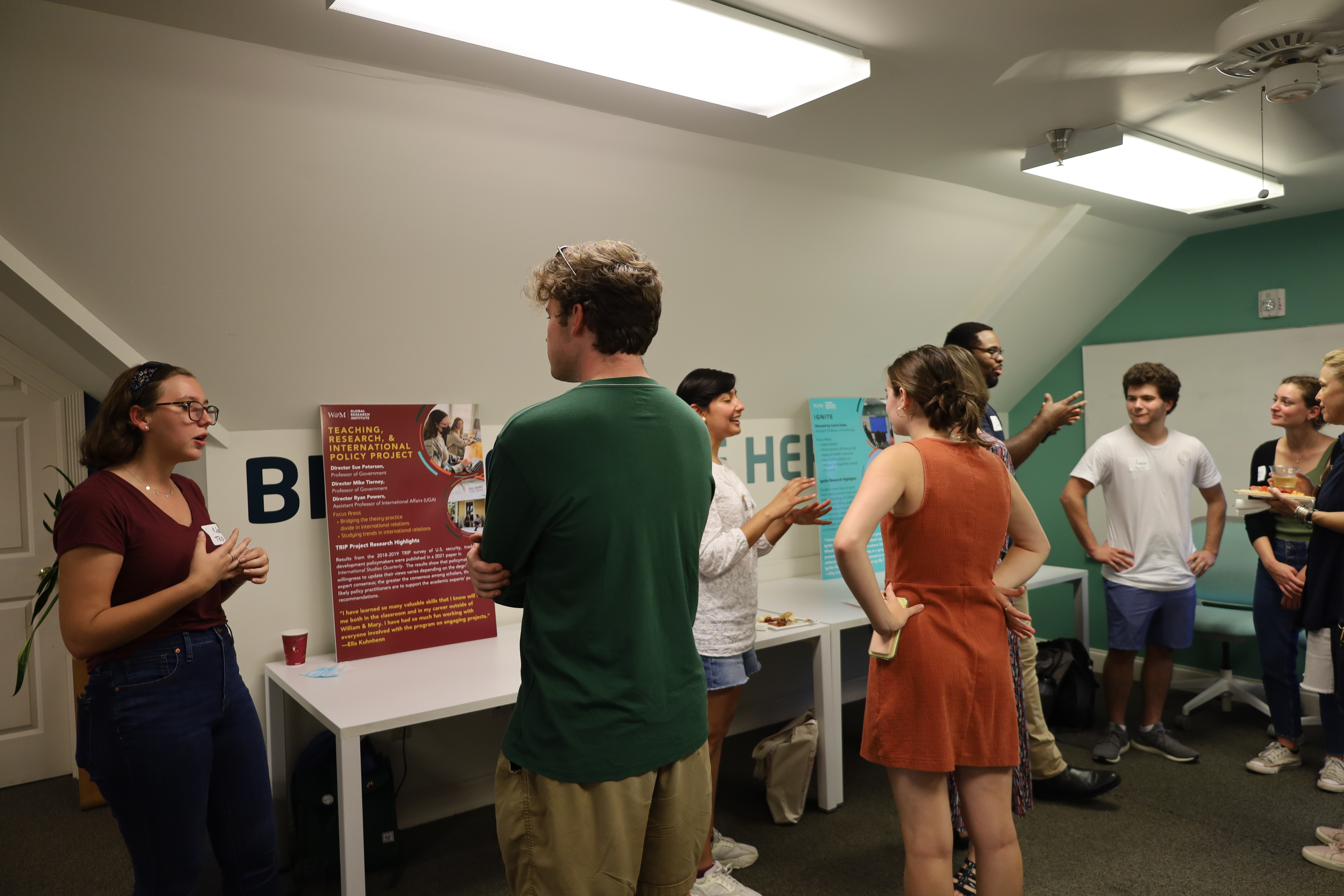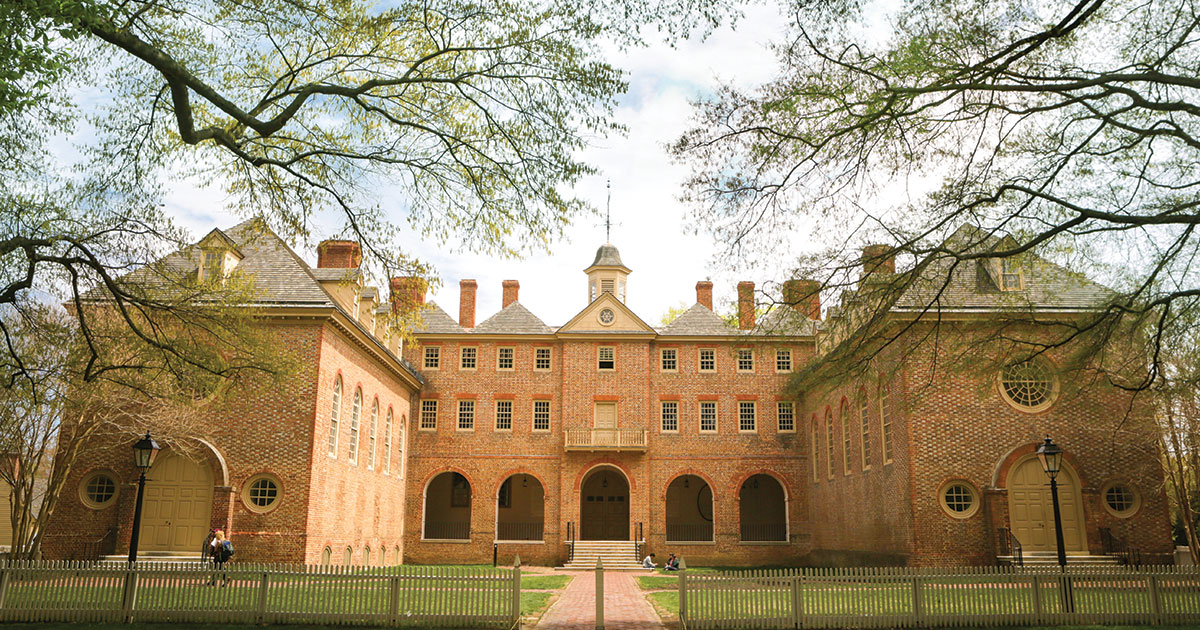From Then to Now: How an Alumni Gift Engages Veterans in Research Using Data Science Tools
When Tommy Jones ‘09 analyzed climate change development grants almost 15 years ago, he engaged in a very different Global Research Institute than what exists today. He worked as a student researcher for “Project Level Aid,” now known as AidData, the largest of GRI’s 10 research labs. But then, the GRI team was much smaller and was missing some of the key features that now define it — including Jones’ very own 2021 gift, which funds experiential learning opportunities for student veterans like he once was.
“I was living a very different life than your average William & Mary student,” said Jones, who served in the Marine Corps prior to his studies and was in his mid-20s while earning his bachelor’s degree. “Research gave me a home base on campus.”
Now a technology entrepreneur who holds a Ph.D. in statistics, Jones recognizes the importance of data science training in cultivating young leaders who are prepared to embrace pressing global challenges. As GRI takes a similar approach in developing its student Research Assistants, Jones’ gift is fit for purpose.
When deciding how to replicate this experience for present-day veterans, Jones said he knew data science should be at the forefront. Dedicating this gift to undergraduates at W&M seemed like a natural fit, and would allow him to continue collaborating with former colleague and GRI Director Mike Tierney ’87, M.A. ’88, P’15, who is also the George & Mary Hylton Professor of Government.
“For a long time, I’d sort of flagged in my own mind that I wanted to provide some sort of scholarship opportunity for student veterans — the sorts of folks that go from high school to the military and then come out and say ‘Well, what now?’” he said. “I wanted to do it with an eye at getting them into … more of a technical or quantitative type of field because I think those are really important job and career skills to be developing.”
As this vision aligns with GRI’s approach to data science and a commitment to diversity, Tierney proposed that GRI would match Jones’ gift. The pair sought and secured an additional pocket of funding from Director of Student Veteran Engagement Charlie Foster M.Ed. ’17 — who also promoted the resulting GRI research positions among student veterans.
New Ways of Thinking
Neuroscience major and Army veteran Trinity Bea ‘22 joined the initiative last spring, supporting GRI Affiliate Jessica Trisko Darden in analyzing women’s roles in Nazi war crimes. She trained in ArcGIS — a system for building interactive maps and analyzing data.
“As a STEM major, I hadn’t really had access to [ArcGIS],” Bea said. “I wanted to be sure to not only learn the software but to master it. We plotted the points, figured out the geo-locations, and mapped the areas. … I would never have had that experience, and these are all things I can add to my resume, too.”

Learning this new skill set not only increased Bea’s marketable skills but also offered personal enrichment and added versatility to her routine.
“I’m typically used to working with humans as subjects and not case numbers,” she said. “I realized that while this is different, it's not really that different. I've become more confident in my research ability.”
Jones’ gift allows veterans to experiment with unfamiliar methods and approaches while receiving faculty mentorship, Bea said. Maia Earl ‘22 — who served in the Air Force for eight years and the Reserve for one year before attending William & Mary — also said her GRI research topic extended beyond her academic area of focus: Middle Eastern studies. With the help of the fund Jones initiated, Earl traveled abroad to Georgia with Professor Dan Maliniak and other GRI Summer Fellows. There, the group conducted interviews with Georgian veterans to determine key motivations for their service alongside NATO forces in Iraq and Afghanistan. The team is building a data set that documents the perceptions and policy positions of both Georgian military veterans and active duty personnel — important groups in Georgian politics.
“The Georgian military is basically modeled after the American military — ever since the early 2000s, when the U.S. began its Train and Equip program there,” Earl said.
The Georgia Train and Equip Program was initially launched with the goal of securing the Pankisi Gorge in northern Georgia, which was believed to be a safe haven for terrorist groups, Earl said.
“It’s something I didn’t even know about before this,” Earl said. “I didn’t know the role they played in those missions, and I think a lot of Americans don’t know.”
When establishing rapport and comfort in interviews with Georgian veterans, Earl said she relied on her military service “to understand where they’re coming from.”
“Even if a research project is not related directly to defense, like this one was, I still think the additional perspective that veterans bring will … lead to new opportunities,” she said. “Veterans have expertise. They’re bringing a lot of their own experience from where they’ve been in the world.”

Bea also said her past gave her situational awareness and motivation in her work with Trisko Darden.
“I'm not majoring in anything that relates to mapping, history or war anymore now that I'm out of the Army, so it's just been about getting back into that space,” Bea said. “It took me a minute to figure out exactly what I was doing and how to do it efficiently. But once I got going, you could not stop me.”
Outcomes and Outreach
Programs that embrace veterans’ problem-solving mentality — such as the initiative that Jones’ gift piloted — can strengthen the campus community, Bea said.
“Our military service seems to intimidate people, but really, we were once civilians too,” she said. “We’re always willing to help, especially if this data can change the way we see things. That's kind of what student veterans are. Our goal is to get a mission and to accomplish it. I hope that bridges the pathways between student veterans and research opportunities in the future.”
Earl said the Office of Student Veteran Engagement plays a critical role in disseminating social and professional opportunities.
“The thing about veterans is that they are often people who are older or have families and are not necessarily connected to all the things that are going on on campus,” Earl said. “The traditional students are just exposed to so much, and the nontraditional students that are maybe off campus don’t necessarily get all the information.”
The research positions funded by Jones’ gift can help to fill this gap by engaging veterans in GRI’s research offerings and community events for years to come, she said. Jones agrees that the professional focus of this initiative can also offer opportunities for connection.
“Working through GRI can give you more exposure to students in a social setting than you would have as a student veteran who lives off campus and then goes somewhere to study and then goes home,” he said. “Being a Research Assistant was pretty foundational for me and has provided ties back to [William & Mary] that have lasted almost 13 years now since I graduated.”

Jones said he hopes GRI’s training likewise makes long-term impressions on veterans’ lives, the work they conduct, and the learning opportunities they facilitate for others.
“Using data and technology is going to stop being niche, and it’s going to start being how the world operates,” he said. “I want to help veterans be the leaders they are and move up in industry and shape their futures.”
Other members and supporters of the William & Mary community can continue facilitating these experiences by giving to Fund 5060 — GRI Lab for Student Veterans.

